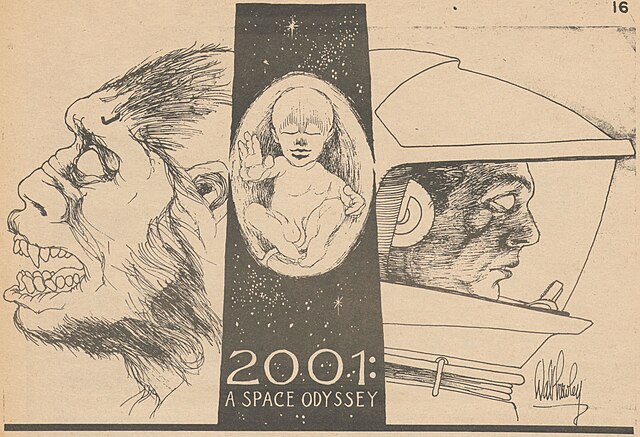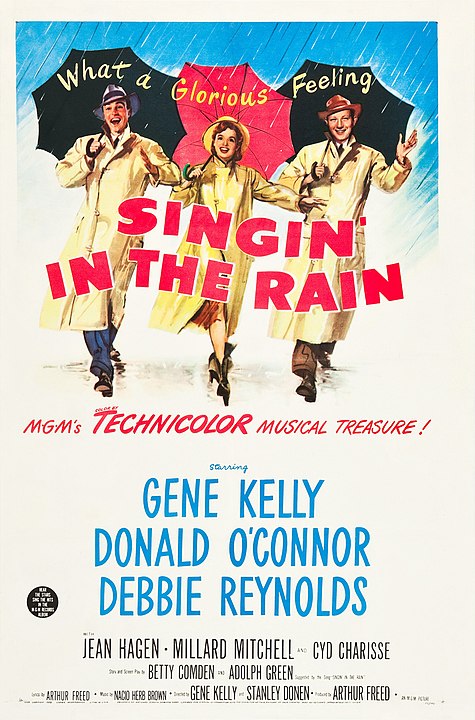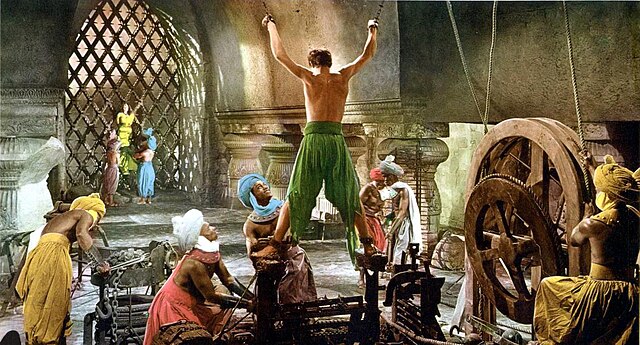You might wonder how filmmakers in the 1950s, without today’s digital technology, managed to create worlds that still capture our imagination. They relied on practical effects, matte paintings, and miniatures to craft scenes that felt both magical and real. Films like ‘2001: A Space Odyssey’ and ‘Star Wars’, though later than the 50s, were built on the groundwork laid during this era, showcasing techniques that defy their time. As you explore further, you’ll uncover the inventive methods these pioneers used, offering a glimpse into how these early special effects set the stage for the cinematic wonders we enjoy today.
Key Takeaways
- Practical effects revolutionized 1950s cinema, using miniatures and physical props for imaginative storytelling.
- Matte painting and miniature models crafted detailed, immersive backgrounds and scenes.
- Optical illusions and emerging color technologies, like Technicolor, enhanced visual storytelling.
- Innovations in animatronics and chroma key techniques allowed for the creation of realistic creatures and fantastical worlds.
- The era’s science fiction boom, led by films like ‘Godzilla’, showcased groundbreaking special effects, shaping the genre’s future.
The Dawn of Practical Effects
As the 1950s unfolded, filmmakers began harnessing practical effects, a move that revolutionized cinema by adding a tangible sense of wonder to the screen. You’ve seen this firsthand in iconic films like ‘2001: A Space Odyssey’ and ‘Star Wars,’ where the magic didn’t just happen in the editing room. It happened on set with miniatures and physical props that brought distant galaxies and futuristic technologies to life right before your eyes.
This era showcased not just ingenuity but a deep-seated craftsmanship. Filmmakers meticulously crafted entire worlds with their hands, creating intricate miniatures that, when filmed, transported you to other dimensions. These practical effects captivated you by seamlessly blending real-world elements with the boundless possibilities of imagination. They enhanced the cinematic experience, making the fantastical elements feel all the more real.
In the 80s, this foundation of practical effects paved the way for a new era of visual storytelling. It combined traditional techniques with emerging technologies, ensuring that the magic of cinema continued to evolve. But it all started in the 1950s, when filmmakers first discovered how to weave the tangible with the fantastical, forever changing how stories were told on screen.
Matte Painting Mastery
You’ve likely marveled at cinematic backgrounds without realizing they were the work of matte painting mastery from the 1950s. This era brought a pivotal shift in how filmmakers could envision and execute their grandest ideas. Here’s how matte painting became a cornerstone of special effects:
- Creation of Realistic Backgrounds: Matte painting was essential for crafting realistic yet fantastical landscapes. By painting on large glass panels, artists could blend these creations seamlessly with live-action footage.
- Iconic Films: Films like ‘The Ten Commandments’ and ‘Forbidden Planet’ showcased the power of matte paintings. They provided epic landscapes and futuristic settings that were otherwise impossible to film.
- Expanding Film Scope: This technique allowed directors to push the boundaries of their storytelling. Matte paintings added depth and visual grandeur, transporting audiences to worlds beyond their imagination.
- Artistry and Innovation: The meticulous work of matte painters not only brought fantastical domains to life but also set the stage for future innovations in visual effects.
Matte painting mastery from the 1950s was more than just a special effect; it was an art form that expanded the visual possibilities of cinema, making the impossible seem real.
Miniature Models Magic
Delving into the magic of miniature models, it’s evident they played a crucial role in bringing the grand visions of 1950s cinema to life. These tiny yet intricate creations allowed filmmakers to craft scenes that were both epic in scope and rich in detail. Whether it was a bustling cityscape, a distant planet’s surface, or the dark depths of the ocean, miniature models provided the perfect solution for depicting detailed settings without the need for expensive, large-scale sets.
Special effects artists of the era poured countless hours into designing, building, and refining these models to guarantee they looked as realistic as possible on screen. The meticulous attention to detail meant that even the smallest features were crafted with precision, making these miniatures convincing to audiences. By combining these models with live-action footage, filmmakers could create scenes that had a depth and scale previously unachievable, particularly in the genres of science fiction and fantasy.
The revolutionary use of miniature models in the 1950s didn’t just save on production costs; it set a new standard for special effects. These creations enabled the creation of immersive worlds that captivated audiences, proving that sometimes the smallest details make the biggest impact.
Optical Illusions Unveiled
In the 1950s, filmmakers turned to optical illusions, using techniques like matte shots and rear projection to create breathtaking visual sequences. This era marked a significant leap in the art of storytelling, allowing directors to weave together the real and the imagined with an unprecedented level of finesse. Here’s how they did it:
- Matte Shots: Artists painted detailed backgrounds on glass panes. These were then combined with live-action footage, transporting characters to fantastical landscapes or historical settings without leaving the studio.
- Rear Projection: Filmmakers projected pre-recorded backgrounds onto a screen positioned behind the actors. This method made it possible to simulate dynamic scenes, such as driving or flying, in a controlled environment.
- Optical Effects: By manipulating film stock and using double exposure techniques, creators added visual elements that were impossible to capture in real life, enhancing the narrative’s visual appeal.
- Integration: These innovations allowed for a more seamless blend of actors with their imaginary surroundings, making the final product more immersive and believable.
Through the use of optical illusions, the 1950s special effects industry revolutionized filmmaking, setting the stage for the future of cinematic storytelling.
Early Color Techniques
As you delve into the world of early color techniques in the 1950s, you’ll find Technicolor leading the charge, transforming how movies looked and felt. But it wasn’t alone; Cinecolor and other competitors also played their parts in pushing the boundaries of color film. These advancements, however, came with their own set of challenges, marking a period of significant change and experimentation in cinema.
Technicolor’s Dominant Era
Technicolor often revolutionized 1950s filmmaking by bringing vibrant color processes to the screen. This era marked a significant shift in how films were experienced, making them more immersive and visually stunning. With Technicolor, special effects in movies reached new heights, engaging audiences like never before. Here’s how it changed cinema:
- Three-strip Technicolor enhanced color quality and depth, making every scene pop.
- Iconic films like ‘Singin’ in the Rain’ and ‘The Wizard of Oz’ showcased Technicolor’s brilliance, setting a high bar for visual storytelling.
- Technicolor’s dominance led to iconic visuals that are still celebrated today.
- The innovative color techniques of Technicolor set a new standard for visual excellence in the 1950s, influencing countless films to come.
Cinecolor and Competitors
During the 1950s, Cinecolor emerged as a vibrant, cost-effective alternative to the more expensive Technicolor process for filmmakers. It utilized a two-color process, combining red and blue-green filters, to produce color films. This method, while not capturing the full spectrum of colors, offered a significant cost reduction, making it a favorite for B-movies, cartoons, and low-budget productions. Cinecolor’s presence in the industry provided filmmakers with a more accessible option to add color to their stories without breaking the bank. Despite its limitations in color reproduction, Cinecolor’s technology enabled a broader range of movies to be produced in color, helping to democratize the use of color in film during an era dominated by expensive color techniques.
Color Transition Challenges
Often, filmmakers found themselves encountering significant obstacles as they moved from black and white to color films in the 1950s. The shift wasn’t just about adding color; it was about mastering new techniques and overcoming a set of unique challenges:
- Technicolor and Eastmancolor were the leading color processes, each with its own hurdles.
- Technicolor demanded precise lighting and makeup adjustments to guarantee vibrant color reproduction, complicating production schedules.
- Eastmancolor offered a more cost-effective solution, but still posed its own challenges in achieving consistent color quality.
- Despite these difficulties, the shift introduced new creative possibilities, adding a visual richness that greatly enhanced the effects and storytelling of films during that era.
Navigating these challenges was no small feat, but the results forever changed the landscape of cinema.
The Science Fiction Boom
The 1950s saw an explosive growth in science fiction films, introducing audiences to classics like Godzilla and The Day the Earth Stood Still. This era marked a pivotal moment for the genre, largely thanks to visionaries like Eiji Tsuburaya. You might not know it, but Tsuburaya wasn’t just the co-creator of Godzilla; he was a titan in the field of special effects, pioneering techniques that would shape the industry for decades to come.
During this time, Japanese tokusatsu science fiction films also rose to prominence. They weren’t just entertaining; they were a showcase for innovative special effects techniques that mesmerized viewers worldwide. Imagine the thrill of seeing Godzilla’s massive form for the first time, brought to life through groundbreaking effects. It was pure magic.
Then there’s Stanley Kubrick’s 2001: A Space Odyssey. Though it arrived a bit later, its influence can’t be overstated. The film featured intricate spaceship miniatures that set a new standard for visual storytelling. These miniatures, combined with other visual effects methods, offered a glimpse into the future of cinema, proving that science fiction films were a force to be reckoned with.
Animatronics Introduction
Animatronics revolutionized special effects in the 1950s, bringing mechanical creatures to life on screen with unprecedented realism. This innovation not only enhanced the storytelling experience but also captivated audiences with a sense of danger and awe. It’s fascinating how these mechanical marvels added depth to the movies, making them more engaging and visually stunning.
Here’s how animatronics changed the game:
- Introduction of Mechanical Creatures: You witnessed creatures moving with intricate movements and interactivity, something previously unimaginable.
- Enhancement of Storytelling: The realism added by animatronics allowed for more complex narratives, making the stories not just seen but felt.
- Sense of Danger and Awe: Mechanical creatures brought a new level of excitement to films, making every scene with them unforgettable.
- Paving the Way for Future Innovations: This early use of animatronics laid the groundwork for future advancements in creating lifelike characters on screen.
Stan Winston’s later work, especially on films like Terminator and Predator in the 1980s, showcased the full potential of animatronics. It’s a proof of the lasting impact of this technology on special effects, proving that what started in the 1950s was just the beginning.
Chroma Key Innovations
As you explore the world of 1950s special effects, you’ll notice how chroma key innovations played a pivotal role. You’ll see how early techniques set the foundation, marvel at the famous scenes they made possible, and understand the lasting impact on technology evolution. These advancements weren’t just about new tools; they revolutionized storytelling by breaking the limits of reality on screen.
Early Chroma Key Techniques
Early chroma key techniques revolutionized filmmaking in the 1950s by allowing creators to craft fantastical worlds with seamless backdrops. This innovation paved the way for:
- Travelling mattes that moved with the action, blending actors into new environments effortlessly.
- Miniature work that, when combined with live-action footage, created expansive, believable settings.
- Seamless compositing of different elements, making the final scenes appear as if filmed in exotic locations.
- Endless possibilities for filmmakers to dream up scenes that were previously impossible to capture on camera.
Famous 1950s Chroma Scenes
While the 1950s introduced many technological advancements in filmmaking, it’s the famous chroma key scenes that truly showcased the era’s innovative spirit. The emergence of chroma key technology allowed for seamless integration of actors into fantastical environments. Films like ‘The Thief of Bagdad’ and ‘The Invisible Boy’ demonstrated early uses, making characters fly on carpets or vanish into thin air. This revolutionary method enabled the creation of otherworldly settings in ‘The Ten Commandments’ and ‘Journey to the Center of the Earth’, where visual effects brought to life epic narratives. The Seventh Voyage of Sinbad’ further showcased chroma key’s power, animating mythical creatures against magical landscapes. These iconic scenes laid the groundwork for future visual effects, proving chroma key as a pivotal technology in cinema.
Technology Evolution Impact
Building on the remarkable scenes achieved with chroma key, let’s explore how this technology’s evolution greatly impacted filmmaking in the 1950s. Chroma key technology wasn’t just a novelty; it was a revolution that redefined the boundaries of visual storytelling. Here’s how:
- Enhanced Visual Storytelling: Filmmakers could now seamlessly integrate actors into any environment, real or imagined.
- Expanded Creative Possibilities: Directors were no longer limited by location. They could create scenes with actors interacting with fantastical creatures or visiting distant planets.
- Elaborate Set Creations: It enabled the production of vast landscapes and intricate sets that would have been too costly or impossible to construct physically.
- Historical Milestone: Its adoption marked a pivotal moment, paving the way for future innovations in cinematic magic and visual effects.
Sound Stage Wonders
In the 1950s, sound stages became magical domains where filmmakers crafted worlds beyond imagination using practical effects and innovative techniques. Within these controlled environments, special effects artists transformed blank canvases into alien landscapes and futuristic cities. They didn’t rely on digital wizardry; instead, they harnessed the power of miniature models and forced perspective techniques to create an illusion of grandeur that filled the silver screen. These practical effects were the backbone of cinematic storytelling, allowing the audience to suspend disbelief and dive headfirst into the imaginative worlds directors dreamt up.
Sound stages were the playgrounds for this blend of creativity and technical skill. Here, filmmakers could manipulate every element of the scene to perfectly capture the envisioned spectacle. The controlled lighting, the meticulously crafted sets, and the strategic use of camera angles all contributed to making the impossible seem real. The 1950s weren’t just about showcasing what was technically possible; they were about pushing the boundaries of what could be imagined. In these sound stage wonders, the industry found the perfect marriage between art and technique, crafting visually stunning scenes that remain iconic in film history.
The Legacy of 50s Effects
The legacy of 1950s special effects has profoundly influenced modern cinema, setting the stage for the stunning visuals we enjoy today. This era didn’t just push the boundaries; it redefined them, laying a foundation that future filmmakers would build upon to create the mesmerizing effects seen in today’s films. Here’s how the 1950s continue to impact the visual landscape:
- Miniatures Mastery: The intricate spaceship miniatures used in classics like ‘Godzilla’ and later, Stanley Kubrick’s ‘2001: A Space Odyssey,’ showcased a level of craftsmanship and detail that remains influential. These miniatures set a benchmark for physical effects, demonstrating that with innovation, small-scale models could bring vast, imaginative worlds to life.
- Innovation in Action: Eiji Tsuburaya and his work on ‘Godzilla’ not only popularized the tokusatsu genre but also introduced techniques that would be refined and expanded in the decades to come. His legacy is a reflection of the power of creative problem-solving in visual storytelling.
- Science Fiction Surge: The 1950s saw a boom in science fiction, with films exploring unknown territories and futuristic concepts. This genre became a playground for special effects, pushing artists to devise new methods to realize their visions.
- Foundational Framework: The advancements of the 1950s served as a pivotal stepping stone for the revolutionary work seen in the 1970s by giants like George Lucas and Steven Spielberg. Their iconic films, building upon the foundational effects techniques of the past, would forever change the cinematic landscape.
The 1950s special effects legacy is a blend of miniatures, innovation, and science fiction, creating a rich tapestry that continues to inspire and shape the visual effects we marvel at in modern cinema.
Frequently Asked Questions
How Did They Do Special Effects in the 50s?
You’re wondering how they pulled off special effects in the ’50s, right? They used miniatures, matte paintings, puppetry, rear projection, and optical effects to create those amazing scenes in movies like Godzilla. Pretty ingenious, huh?
What Kinds of Special Effects Were Used in the Big Bug Films of the 50S Before Computer Generated Graphics Were Developed?
In ’50s big bug films, before CGI, you’d see miniatures, puppetry, matte paintings, oversized props, and animatronics. Techniques like rear projection and forced perspective made those giant insects look real and terrifying on screen.
What Techniques Were Used in Film in the 1950s?
In the 1950s, filmmakers used techniques like miniatures, stop-motion animation, and rear projection to create movie magic. You’d see these in classics, proving you don’t always need CGI to captivate an audience.
How Did They Do Special Effects Before Computers?
Before computers, filmmakers used practical techniques like miniatures, matte paintings, and stop-motion animation to create special effects. They relied on physical models and creativity to craft believable scenes without digital technology.
Conclusion
You’ve journeyed through the 1950s, a time when the magic of cinema was crafted with hands and hearts. From practical effects to matte paintings, and from miniature models to the first steps in chroma key innovations, filmmakers of the era laid the groundwork for the visual wonders we enjoy today. Their legacy endures, inspiring modern creators to push boundaries further. Remember, every time you’re captivated by a movie’s effects, you’re witnessing the magic that started in the ’50s.




